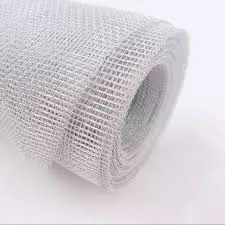-
+86 15030157877
-
sales@galvanizedmetalmesh.com
Nov . 08, 2024 09:02 Back to list
Diamond Mesh Production Facility for High-Quality Fencing Solutions and Innovative Designs
The Diamond Mesh Factory Crafting Excellence Through Innovation
In an era where industrial demands are ever-evolving, the need for high-quality materials is paramount. Among these, diamond mesh products have emerged as essential components in various sectors, from construction and agriculture to automotive and home décor. The diamond mesh factory stands at the forefront of this industry, blending advanced technology with skilled craftsmanship to produce exceptional products that meet the highest standards.
Understanding Diamond Mesh
Diamond mesh refers to a lattice structure made from metal or synthetic materials, formed in a diamond-shaped pattern. Its unique design not only enhances aesthetic appeal but also provides strength and durability. Often used for fencing, safety nets, and decorative applications, diamond mesh is valued for its versatility. It allows for airflow and visibility while maintaining a formidable barrier—qualities that make it an ideal choice across numerous applications.
The Manufacturing Process
The manufacturing of diamond mesh involves several critical steps, each of which plays a role in ensuring the final product's quality and reliability. The process begins with the selection of raw materials, primarily steel or aluminum, known for their strength and resistance to corrosion. Quality control is initiated at this stage; only the best materials are chosen to guarantee durability in the finished product.
Next comes the wire drawing process, where the metal is drawn into finer diameters suitable for mesh production. This process requires precision and expertise, as the thickness of the wire will directly affect the mesh's strength and flexibility. Once the wires are prepared, they are woven into the diamond pattern using automated machinery. This stage is crucial, as the machinery must be calibrated to maintain consistent tension and spacing, ensuring that each diamond shape is uniform.
After weaving, the diamond mesh undergoes treatment processes, which may include galvanization or coating to enhance corrosion resistance and longevity. This step is vital in extending the lifespan of the product, especially for applications exposed to the elements. The treated mesh is then cut to size, packaged, and prepared for distribution.
Technological Innovations
diamond mesh factory

The diamond mesh factory is not only a site of traditional craftsmanship but also a hub of technological innovation
. Modern factories incorporate state-of-the-art machinery equipped with computer numerical control (CNC) systems that facilitate precise cuts and consistent quality. Automation reduces human error and increases production efficiency—a necessity in today’s fast-paced market.Moreover, advancements in materials science have led to the development of composite meshes that combine the benefits of different materials, offering enhanced properties such as weight reduction and improved resistance to environmental factors. These innovations enable manufacturers to cater to specific customer needs, creating tailored solutions for a wide range of applications.
Environmental Considerations
As the world becomes increasingly aware of environmental issues, the diamond mesh factory is taking steps to minimize its ecological footprint. Sustainable practices, including recycling scrap materials and using eco-friendly coatings, are becoming standard in the manufacturing process. Moreover, many factories are investing in renewable energy sources to power their operations, thereby reducing reliance on fossil fuels and lowering greenhouse gas emissions.
Customization and Services
Understanding that each client has unique requirements, many diamond mesh factories offer customization services. Customers can choose from various wire diameters, mesh sizes, and finish options to create a product that fits their specific needs. Additionally, excellent customer service and support are integral to these operations, including guidance on installation and maintenance, ensuring that clients make the most of their investment.
Conclusion
The diamond mesh factory exemplifies the fusion of traditional manufacturing techniques and cutting-edge technology. By prioritizing quality, sustainability, and customization, these factories not only contribute to various industries but also set a benchmark for excellence. As demand continues to grow, the role of diamond mesh in enhancing safety and aesthetics across applications will only become more significant, ensuring that these factories remain pivotal in the industrial landscape.
-
Premium Eco-Friendly Roof Tiles | Affordable & Durable
NewsJul.31,2025
-
Premium Roof Tiles for Durable & Stylish Roofing Solutions
NewsJul.30,2025
-
High-Quality Roof Tiles for Durable & Stylish Roofing Solutions
NewsJul.29,2025
-
High Quality Square Wire Mesh Manufacturer & Supplier for Wholesale
NewsJul.29,2025
-
Premium Roof Tiles for Durable & Stylish Roofing Solutions
NewsJul.29,2025
-
Hexagonal Gabion for Slope Protection & Retaining Walls | Durable Wire Mesh
NewsJul.29,2025



